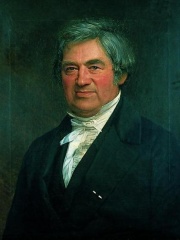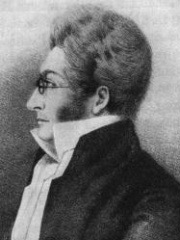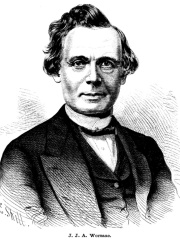


The Most Famous
ARCHAEOLOGISTS from Denmark
This page contains a list of the greatest Danish Archaeologists. The pantheon dataset contains 151 Archaeologists, 3 of which were born in Denmark. This makes Denmark the birth place of the 9th most number of Archaeologists behind Russia, and Egypt.
Top 3
The following people are considered by Pantheon to be the most legendary Danish Archaeologists of all time. This list of famous Danish Archaeologists is sorted by HPI (Historical Popularity Index), a metric that aggregates information on a biography's online popularity.

1. Christian Jürgensen Thomsen (1788 - 1865)
With an HPI of 71.23, Christian Jürgensen Thomsen is the most famous Danish Archaeologist. His biography has been translated into 37 different languages on wikipedia.
Christian Jürgensen Thomsen (29 December 1788 – 21 May 1865) was a Danish antiquarian who developed early archaeological techniques and methods. In 1816 he was appointed head of 'antiquarian' collections which later developed into the National Museum of Denmark in Copenhagen. While organizing and classifying the antiquities for exhibition, he decided to present them chronologically according to the three-age system. Other scholars had previously proposed that prehistory had advanced from an age of stone tools, to ages of tools made from bronze and iron, but these proposals were presented as systems of evolution, which did not allow dating of artifacts. Thomsen refined the three-age system as a chronological system by seeing which artifacts occurred with which other artifacts in closed finds. In this way, he was the first to establish an evidence-based division of prehistory into discrete periods. This achievement led to his being credited as the originator of the three-age system of European antiquity. Thomsen also wrote one of the first systematic treatises on gold bracteates of the Migration period. Thomsen's study of artifacts within the Copenhagen museum were based on associations between stylistic change, decoration and context; he recognised the importance of examining objects from "closed finds", allowing him to determine the associations of common artifacts for various periods (stone - bronze - iron). His results were published in the Ledetraad til Nordisk Oldkyndighed (Guideline to Nordic Antiquity) in 1836. An English translation was produced in 1848.

2. Peter Wilhelm Lund (1801 - 1880)
With an HPI of 58.59, Peter Wilhelm Lund is the 2nd most famous Danish Archaeologist. His biography has been translated into 19 different languages.
Peter Wilhelm Lund (14 June 1801 – 25 May 1880) was a Danish-Brazilian paleontologist, zoologist, and archeologist. He spent most of his life working and living in Brazil. He is considered the father of Brazilian paleontology as well as archaeology. Lund was the first to describe dozens of species of Pleistocene megafauna, including the saber-toothed cat Smilodon populator. He also made the then ground-breaking discovery that humans co-existed with long-extinct animal species, something which possibly prompted him to terminate his scientific work. His comprehensive collections are today found at the Danish Natural History Museum in Copenhagen.

3. Jens Jacob Asmussen Worsaae (1821 - 1885)
With an HPI of 56.64, Jens Jacob Asmussen Worsaae is the 3rd most famous Danish Archaeologist. His biography has been translated into 16 different languages.
Jens Jacob Asmussen Worsaae (14 March 1821 – 15 August 1885) was a Danish archaeologist, historian and politician, who was the second director of the National Museum of Denmark (1865–1874). He played a key role in the foundation of scientific archaeology. Worsaae was the first to excavate and use stratigraphy to prove C. J. Thomsen's sequence of the Three-age system: Stone, Bronze, Iron. He was also a pioneer in the development of paleobotany through his excavation work in the peat bogs of Jutland. Worsaae served as Kultus Minister of Denmark (the cultural and education minister) for Christen Andreas Fonnesbech from 1874 to 1875.
People
Pantheon has 3 people classified as Danish archaeologists born between 1788 and 1821. Of these 3, none of them are still alive today. The most famous deceased Danish archaeologists include Christian Jürgensen Thomsen, Peter Wilhelm Lund, and Jens Jacob Asmussen Worsaae.
Deceased Danish Archaeologists
Go to all RankingsChristian Jürgensen Thomsen
1788 - 1865
HPI: 71.23
Peter Wilhelm Lund
1801 - 1880
HPI: 58.59
Jens Jacob Asmussen Worsaae
1821 - 1885
HPI: 56.64
Overlapping Lives
Which Archaeologists were alive at the same time? This visualization shows the lifespans of the 3 most globally memorable Archaeologists since 1700.

